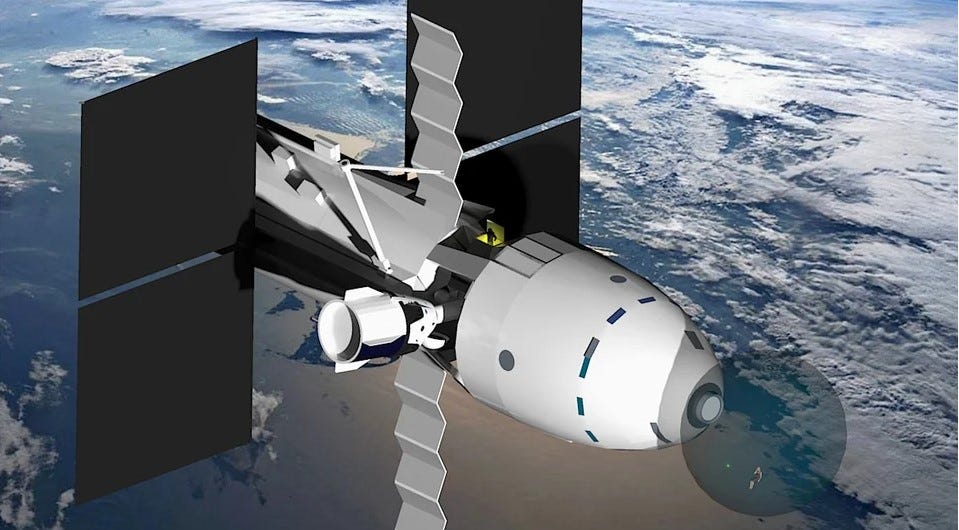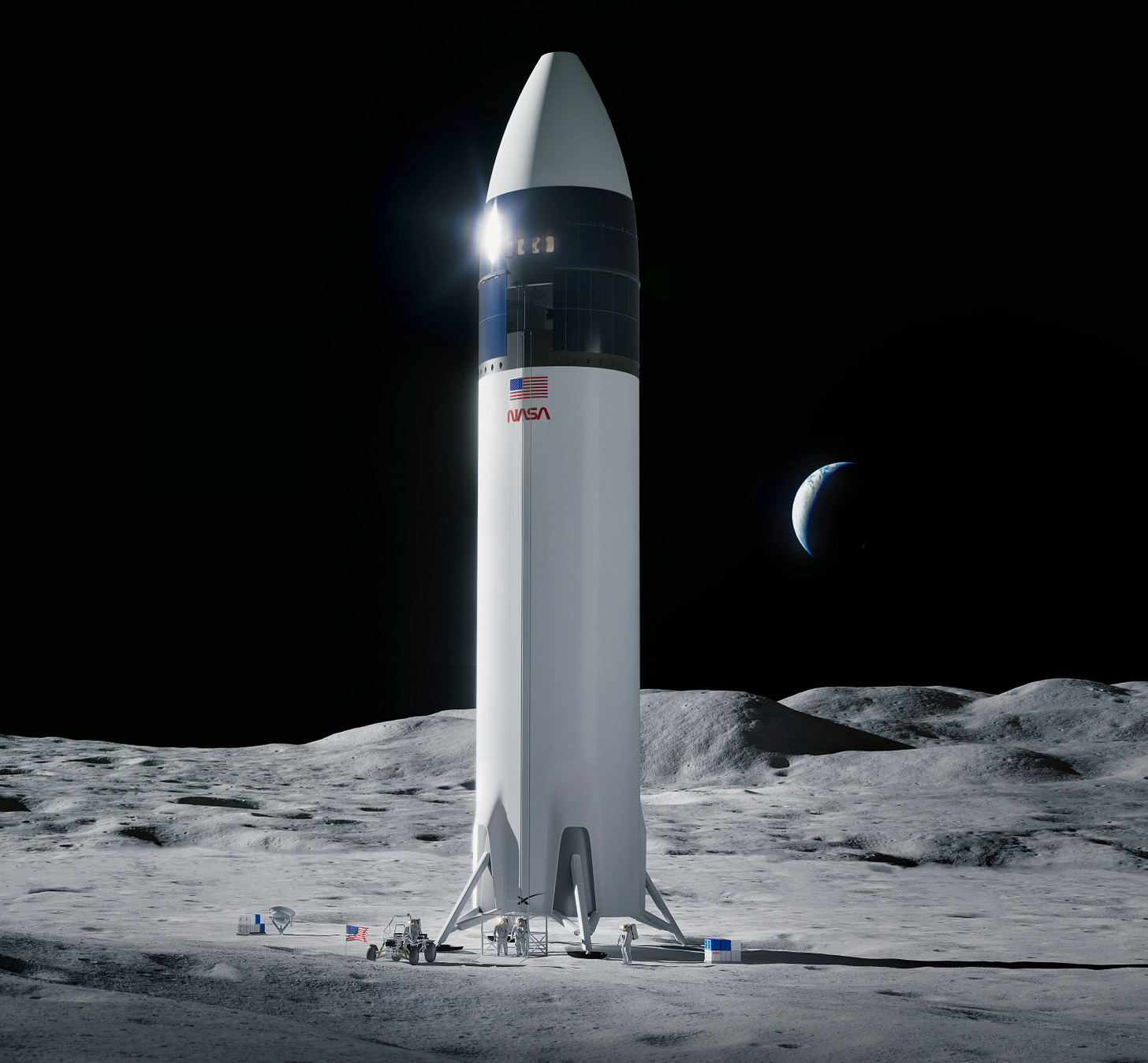In 2016 SpaceX boldly decided to build Starship, a Super Heavy Lift (SHL) vehicle, capable of carrying 200 tonnes to Low Earth Orbit (LEO). They intend to use this vehicle to settle Mars, which would require an extraordinary amount of payload to be delivered, making SHL a necessity. However, Starship’s lift capacity far exceeds any payload required for civil, commercial or defense customers, which implies they foresee emerging applications for the vehicle beyond Mars colonization. As a rule, all SpaceX vehicles have to pay their way, because they are a commercial company. For example: in the early days their Falcon 1 rocket didn’t prove economic so it was discontinued in favor of Falcon 9. Similarly Falcon Heavy took longer to develop than anticipated, costing SpaceX more than $500m and was nearly canceled by CEO Elon Musk, allowing them to redirect resources to Starship development. However, a Falcon Heavy flight had already been purchased by the Air Force, which earned it a last minute reprieve. Even Starship was preceded by a 12m diameter vehicle, called the Interplanetary Transport System, which was abandoned after the current 9m diameter Starship proved more practical. Since then SpaceX have doggedly stuck with Starship, despite its overcapacity for the market, which suggests they might have other applications to help close the business case.
Commercial Applications for Starship
In 2021 NASA awarded SpaceX a $2.89bn contract to adapt Starship into a Human Landing System (HLS) for the Artemis moon program. Currently they are mid-way through this development contract, and projected to spend $5bn by the end of this year on Starship and its launch facilities, which suggests NASA could contribute roughly a third of the overall cost for this vehicle ($10bn is the projected maximum).
In the commercial sphere, SpaceX agreed to launch the Superbird-9 satellite on Starship, although the contract revenue is unlikely to cover the operating cost of this vehicle, because it can’t be reused at present. Previously it took SpaceX 7 years to develop booster reuse with the Falcon 9, so realistically it could take a couple of years at least to reuse the Starship booster (called Super Heavy), and potentially longer for the Starship spacecraft, which faces an even greater challenge returning from orbit.
SpaceX also plan a pair of lunar cruises on Starship, paid for by Yusaku Maezawa and Dennis Tito, following the first crew test flight with Jared Isaacman. Hopefully the amount received for these flights will cover operating costs, even without full reuse of the Starship launch vehicle.
They also intend to use this vehicle to launch Starlink version 2 satellites, although these are produced by SpaceX, so technically not a source of external revenue. In the long run, however, once Starship becomes fully reusable, Starlink internet promises to be a substantial source of income from most democratic countries.
Overall it seems SpaceX have little prospect of breaking even with Starship at present, hence it would appear a proactive investment, in order to capitalize on emerging markets.
Emerging Applications for Starship
All being well, SpaceX could attempt Mars landings in the medium term, sending a team of 12 engineers and explorers on each Starship for a multiyear mission. Unfortunately they are unlikely to see any financial return from these early expeditions, expect operating costs to be high, and NASA funds are limited.

However, SpaceX recently partnered with NASA to adapt Starship into a kind of roving space station, through an unfunded Space Act Agreement. SpaceX had previously bid Starship for NASA’s CLD program, which offers financial and technical support to design and construct a commercial space station. Unfortunately SpaceX failed to secure a CLD award, and in an ensuing statement NASA said the bid “fails to meet goals for developing the LEO economy.” Undeterred, SpaceX still seems interested in building a space station, which could have a number of possible explanations: -
Own Use – No doubt SpaceX have their own application for a space station, considering their long-term plans. For example, one could be used as an orbital habitat to house maintenance workers in LEO. SpaceX will need a large number of orbital propellant depots and Starships to support Mars transport, all of which will require service and maintenance as they await the next Mars transfer window.
Space Superhighway – a report by defense experts recommended a transport network, called the Space Superhighway, should be built to the moon through mainly commercial means. This will require logistic depots in LEO and Low Lunar Orbit (LLO), plus regular shuttle flights in between, which sounds ideal for Starship.
“The Pentagon’s Defense Innovation Unit (DIU) wants options for an unmanned orbital outpost to support space experiments and operations — a logistics hub that might even grow, DIU’s solicitation suggests, to a larger manned space station.” ~ Breaking Defense
Defense Station – the DIU has engaged three companies (Sierra Space, Nanoracks and Arkisys) to study building an “Orbital Outpost.” SpaceX could essentially leap-frog these efforts, by deploying a similar pressurized volume to the ISS with a single launch of Starship. If stationed in Geostationary Orbit, military personnel could use it to protect, service and refuel military satellites vital to national interests.
“Let’s say you have a satellite and you launch and something goes wrong… BFR [Starship] has a capability to open its payload bay, bring the satellite back in, close it, pressurize it, work on it and redeploy it.” ~ Gwynne Shotwell/IE Business School, Madrid
Space Cruiser – given adequate provision of propellant depots, Starship could perform long duration missions to any orbit in cislunar space. Certainly we will need someone like Space Force to operate a security/rescue/retrieval service as space becomes more contested/commercial/congested over the next few decades.
“If you want to just go see how your satellite’s doing or you’re getting interference in the GEO belt, maybe you want to go up there and take a look at your neighbors, seeing if they are cheating or not, BFR [Starship] will basically allow people to work and live in space…” ~ Gwynne Shotwell/IE Business School, Madrid
Strategic Depots – the US Space Force has shown interest in deploying orbital cargo depots. These would be used to store emergency supplies and military materiel, ready to be landed at any location around Earth at relatively short notice.
Given the military’s interest in orbital outposts (and tender spacecraft), it’s little wonder SpaceX are looking to build a space station version of Starship. However, the military’s interest doesn’t stop there, they also want to use Starship for point-to-point transport: -
“The Space Force is the lead service for this [rocket cargo] program. If any of these different offerings, groups are successful… We’re already starting to activate plans for program stand up in the 2026 timeframe with IOC [Initial Operational Capability] moving to full operational capability as the use cases evolve, and the technology and tools.” ~ Space Force Colonel James Horne
In early 2022 SpaceX were awarded a $102m contract to demonstrate cargo deliveries on a heavy rocket, which could lead to a more substantial contract ($1bn+) once the operational program begins. At present SpaceX appear a shoo-in for this award, considering they have already performed some successful landing tests with the Starship spacecraft. Fortunately the operating costs for point-to-point transport could be relatively low, because Starship’s upper stage can reach most destinations, without need for a Super Heavy booster.
“Add 2 to 4 more Raptors for Starship point to point on Earth. You can go surprisingly far [with a single stage], even with low lift/drag. Dramatically improves cost, complexity & ease of operations. Distances of ~10,000 km with decent payload seem achievable at roughly Mach 20.” ~ Elon Musk
In Conclusion
Seems SpaceX have stolen a march over competitors, considering the myriad applications for Starship. Space Force promises to become a major customer in the future, through their many ambitious projects including rocket cargo transport, space stations, possibly even space cruisers. This new branch of the military needs to differentiate themself from the Air Force, and broaden their budget, hence highly motivated to pursue these advanced projects. This should allow them to evolve into a true space force that operate throughout cislunar space, the heart of the future space economy.
If SpaceX capture only a fraction of this business they could easily recoup their investment in Starship, even if it reaches the projected maximum of $10bn. Fortunately they face little competition in this space, no-one comes close to landing an orbital booster or can launch anything the scale of Starship – except for SpaceX.





In my mind, I can make a strong case for Lunar cruises. Unlike landing on the Moon, circumventing it is much safer, easier, and cheaper.
I suppose the question is, will Starship become the Spruce Goose or the 747 of our era? Time will tell.
I am so glad you liked my notion/render of a proper Starship based Space Station. I would appreciate it if your could reference my article from about 2 years ago:
https://www.reddit.com/r/space2030/comments/mi4q5q/starship_based_space_station_for_nasa_commercial/